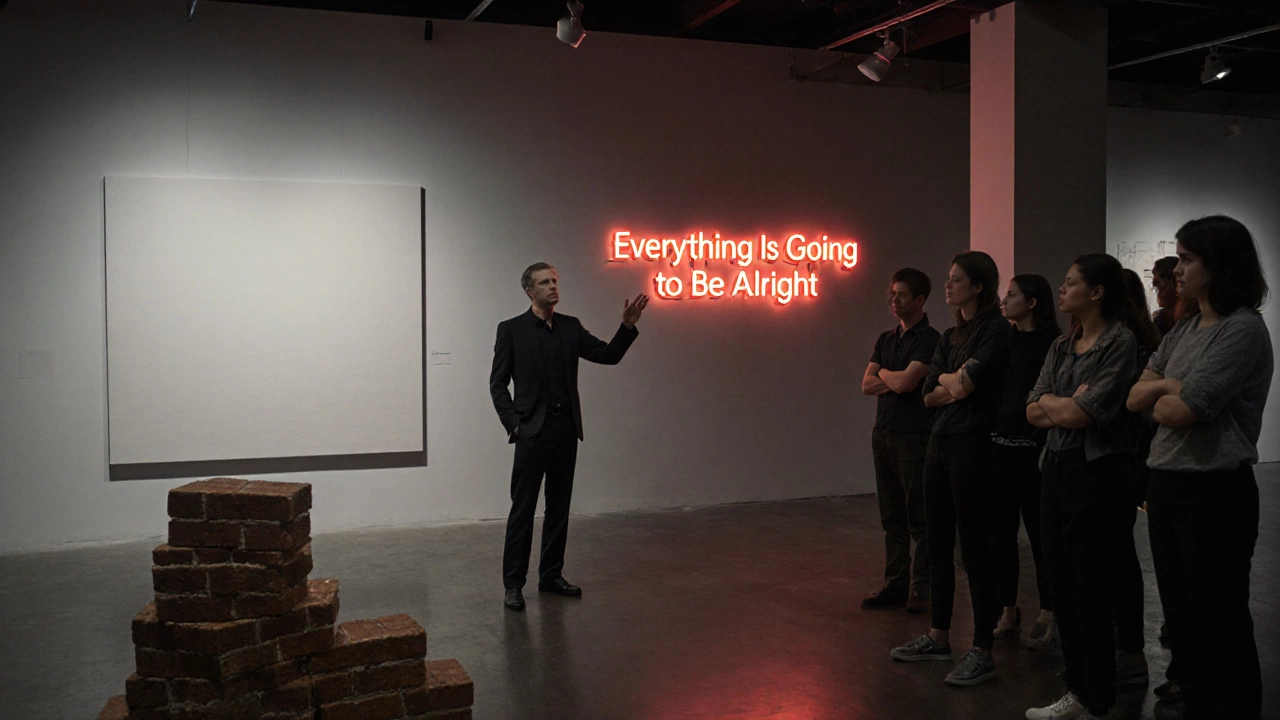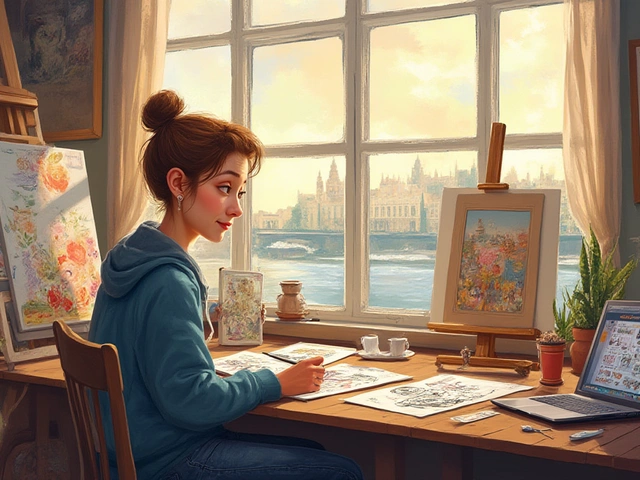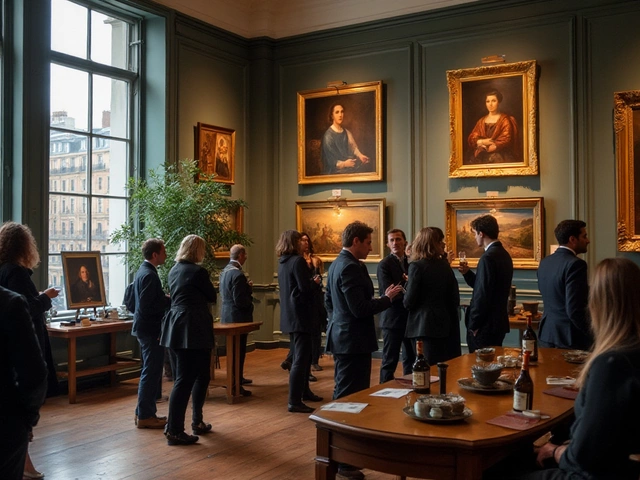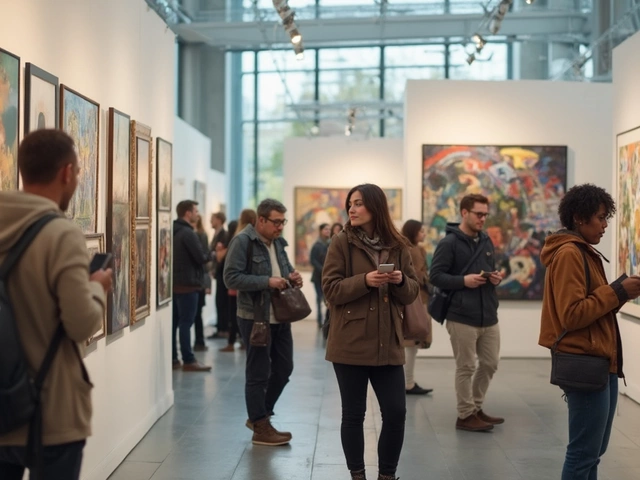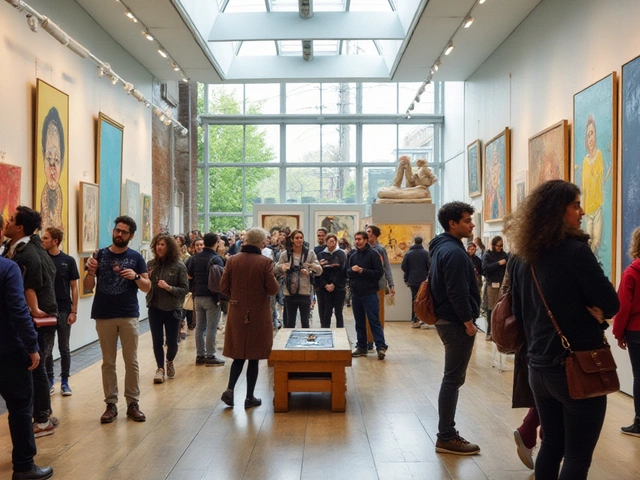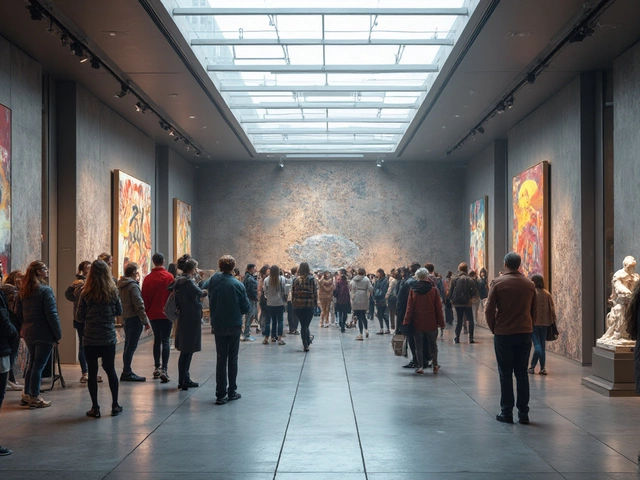Look around any major city gallery and you’ll see it: a blank canvas, a pile of bricks, a neon sign that says ‘Everything Is Going to Be Alright’ - and then the whispers. Modern art doesn’t just confuse people. It annoys them. It makes them feel like they’re missing a joke only the elite understand. And that’s why so many walk away shaking their heads.
It Doesn’t Look Like Art - And That’s the Point
For centuries, art was about skill. A portrait had to look like the person. A landscape had to make you feel the breeze. When Picasso painted a face with three eyes and a nose on the cheek, people didn’t just say, ‘I don’t get it.’ They said, ‘My five-year-old could do that.’ And they weren’t wrong - in a technical sense. But they missed the whole idea.
Modern art stopped being about imitation. It started being about ideas. Marcel Duchamp’s Fountain - a signed porcelain urinal from 1917 - wasn’t meant to be beautiful. It was meant to ask: ‘What even is art?’ If you can take something mass-produced, flip it on its back, sign it, and put it in a museum, then maybe art isn’t about craftsmanship. Maybe it’s about context. Maybe it’s about challenging what we think we know.
That shift scared people. If anyone can call something art, then what’s the point of training for ten years to learn perspective or anatomy? Why pay $100 million for a painting that looks like a child’s splash of paint? The discomfort isn’t about the art. It’s about losing the old rules. And when rules vanish, people feel lost.
The Money Problem
Nothing fuels suspicion faster than absurd prices. A Damien Hirst spot painting sold for $19 million. A shredded Banksy - which was shredded on purpose during an auction - ended up being worth more than before. A single word by Bruce Nauman, written in neon, went for over $3 million.
When you see those numbers, your brain does the math: ‘I can’t even afford a decent dinner, but someone paid millions for a pile of stuffed animals?’ It feels like a scam. And in some cases, it is. The art world has long been a playground for the wealthy to display power, launder money, or chase status. That reality taints everything.
But here’s the twist: the same people who roll their eyes at a $10 million sculpture are often the ones buying luxury watches or designer sneakers for the same reason - to signal belonging. Art just doesn’t hide its elitism behind a logo. It wears it on its sleeve.
Art Schools Don’t Teach You How to Appreciate It
Most of us learned art in school as coloring inside the lines. We drew suns, houses, and stick-figure families. Then, in high school, we got a quick tour of the Renaissance. After that? Silence. No one explains what happened after 1900. No one tells us why Jackson Pollock dripped paint. No one says that Yves Klein’s blue paintings were about the void, not the color.
Modern art isn’t taught - it’s dumped on you. You’re expected to just ‘feel it.’ But feeling isn’t enough. Understanding needs context. Without knowing that the Dada movement was a reaction to World War I - a protest against reason, logic, and the systems that led to mass death - Duchamp’s urinal looks like a prank. With context? It looks like a scream.
That’s the gap. People don’t hate modern art because it’s ugly. They hate it because they were never given the keys to unlock it.
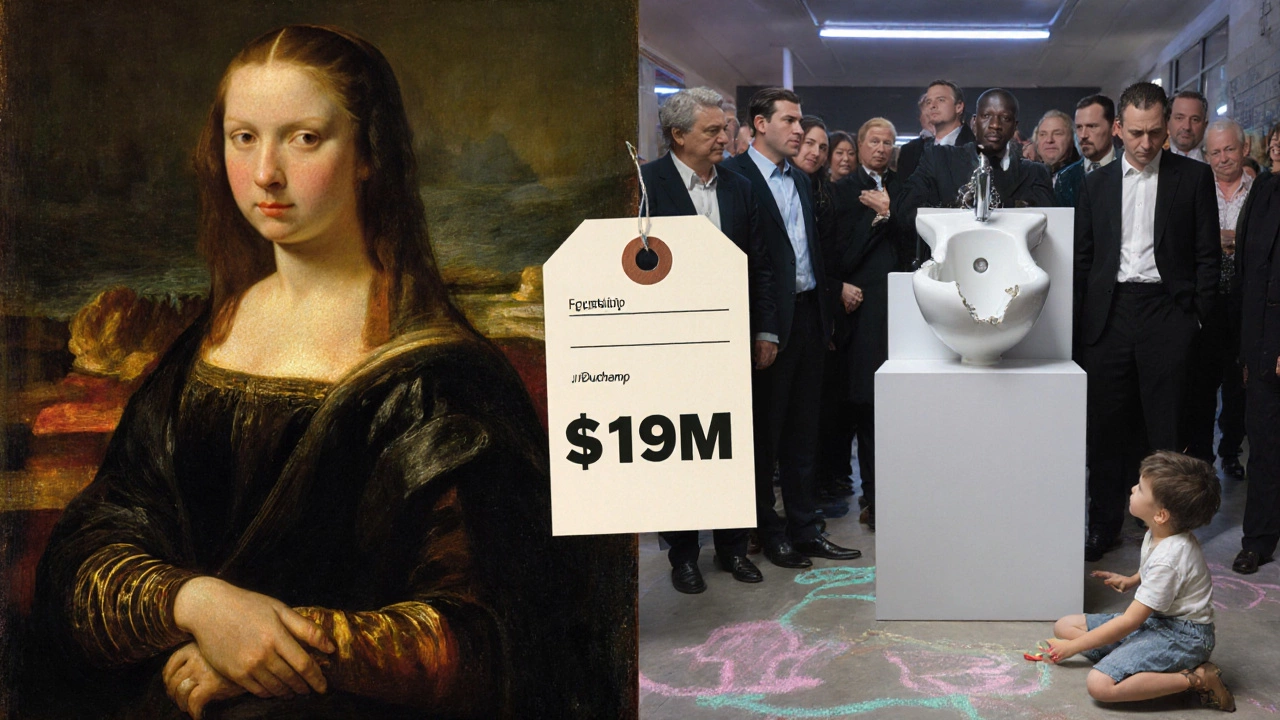
The Media Makes It Look Like a Joke
Think about how modern art gets covered in the news. Headlines like: ‘Man Pays $20K for a Banana Duct-Taped to a Wall.’ ‘Artist Sells Empty Frame for $15K.’ The tone is always snarky. The photos show confused tourists laughing. The reporters never ask: ‘Why did this happen?’ They just show the absurdity and let you laugh.
That’s not journalism. It’s entertainment. And when the media treats modern art like a punchline, people stop trying to understand it. They start believing it’s all nonsense. The real story - the political statements, the critiques of capitalism, the exploration of identity - gets buried under memes and TikTok skits.
What if instead of mocking a banana, the media explained that the piece, Comedian by Maurizio Cattelan, was a commentary on the absurdity of art markets? Would people still laugh? Maybe not. But they’d still be angry. Because now they’d realize the joke was on them.
It Challenges Comfort
Human beings like things that make sense. We like symmetry. We like stories with beginnings, middles, and ends. We like art that tells us something we already know: ‘This is beautiful.’ ‘This is sad.’ ‘This is love.’
Modern art refuses to do that. It doesn’t comfort. It unsettles. It asks: ‘Why do you think that’s beautiful?’ ‘Who decided what’s valuable?’ ‘What if meaning isn’t in the object, but in your reaction to it?’
That’s terrifying. It means your taste isn’t innate. It’s shaped by culture, money, and education. It means you might be wrong about what you think you know. And that’s harder to accept than a painting that looks like a mess.
When you stand in front of a Mark Rothko and feel something you can’t name - a quiet ache, a sense of awe - you don’t know if it’s real or if you’re just being manipulated. So you say, ‘I don’t get it,’ because admitting you feel something you can’t explain is scarier than dismissing it.
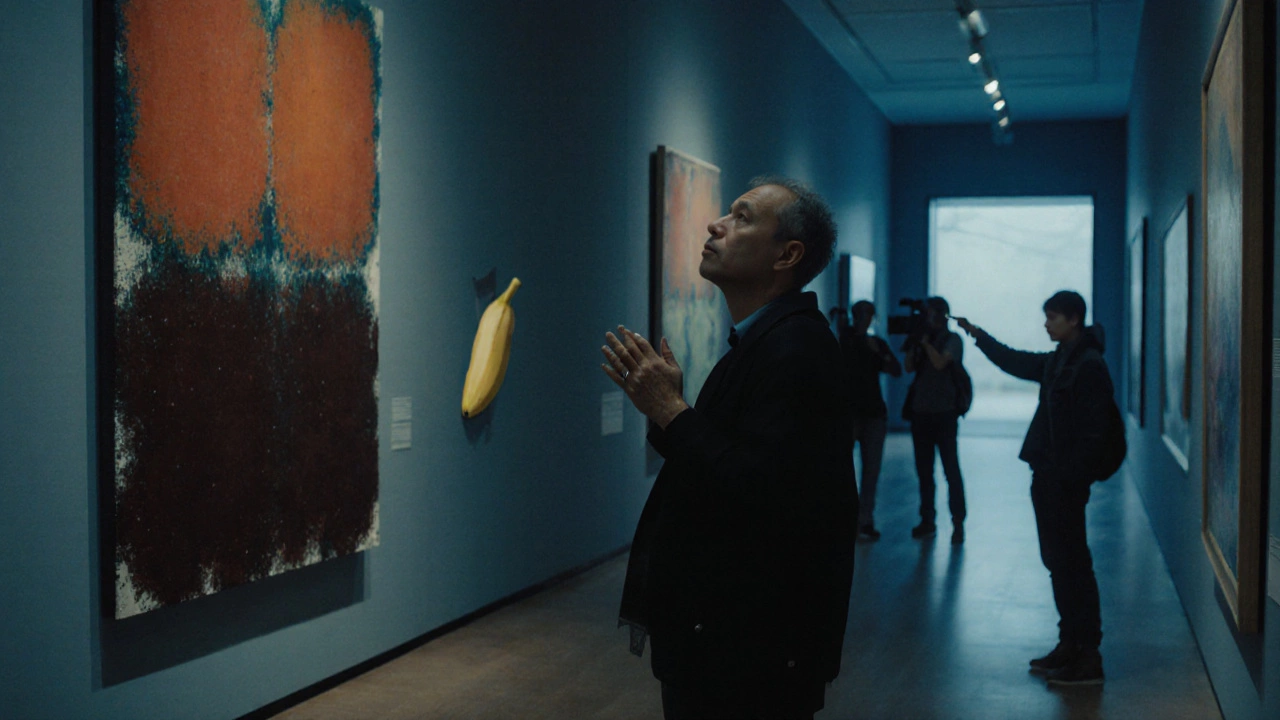
It’s Not About the Art - It’s About Power
At its core, the backlash against modern art isn’t about aesthetics. It’s about control. Who gets to decide what’s valuable? Who gets to say what counts as culture?
For centuries, the church, the monarchy, and later the bourgeoisie controlled art. They paid for it. They hung it in palaces. They decided what was worthy. Modern art broke that chain. It let artists speak for themselves - often about inequality, oppression, war, and alienation. That’s why institutions that once celebrated classical art now fight to include modern pieces: because modern art doesn’t flatter power. It exposes it.
So when someone says, ‘That’s not art,’ what they’re really saying is: ‘I don’t want to be forced to think differently.’
What If You Just Stopped Judging?
Try this: next time you see a piece of modern art you don’t understand, don’t say ‘I could do that.’ Say: ‘Why did the artist make this?’
Look at the title. Read the plaque. Ask yourself: What was happening in the world when this was made? What was the artist reacting to? Who were they speaking to? What are they refusing to let you ignore?
You don’t have to love it. You don’t even have to like it. But if you refuse to try, you’re not rejecting the art. You’re rejecting the chance to understand a part of the world that’s trying to tell you something.
Modern art doesn’t need your approval. But it deserves your curiosity.
Why do people say modern art is just a scam?
People call modern art a scam because it often defies traditional ideas of skill and beauty. When a painting looks like random splatters or a sculpture is just a chair, it’s easy to assume the artist didn’t work hard. But the value isn’t in the technique - it’s in the idea. A work like Duchamp’s urinal wasn’t chosen because it was well-made. It was chosen because it forced people to question what art even is. The scam isn’t the art - it’s the myth that art must be beautiful to matter.
Is modern art really worth millions?
Some modern artworks sell for millions because they’re rare, historically significant, and tied to powerful narratives. A painting by Mark Rothko isn’t valuable because it’s technically perfect - it’s valuable because it captures a mood that changed how people think about color and emotion in art. The price also reflects market dynamics: collectors, galleries, and auctions create demand. Like rare coins or vintage cars, scarcity and cultural weight drive value, not just craftsmanship.
Can anyone just call anything art?
Technically, yes - anyone can call something art. But not everything gets into museums or sells for millions. What makes something ‘recognized’ as art is context: the artist’s intent, the historical moment, the institutional backing, and critical reception. A child’s drawing on the fridge isn’t the same as a similar drawing in a gallery with a title and a plaque. The difference isn’t the object - it’s the framework around it. That framework is what separates random objects from meaningful art.
Why do museums keep showing modern art if no one understands it?
Museums show modern art because it’s part of history - not just of aesthetics, but of society. Modern art reflects revolutions in thought: feminism, civil rights, technology, globalization. It’s not about pleasing everyone. It’s about documenting how humans have questioned reality, identity, and power. If museums only showed what people already liked, they’d be theme parks, not cultural archives. The discomfort you feel? That’s the point.
Do artists even know what they’re doing?
Most modern artists are deeply intentional. They study philosophy, history, and theory. They spend years developing their ideas. A single piece might be the result of hundreds of sketches, research trips, and conversations. What looks spontaneous - like Pollock’s drips - is often the product of years of disciplined experimentation. The mystery isn’t that they don’t know what they’re doing. It’s that they’re asking you to see the world differently.
